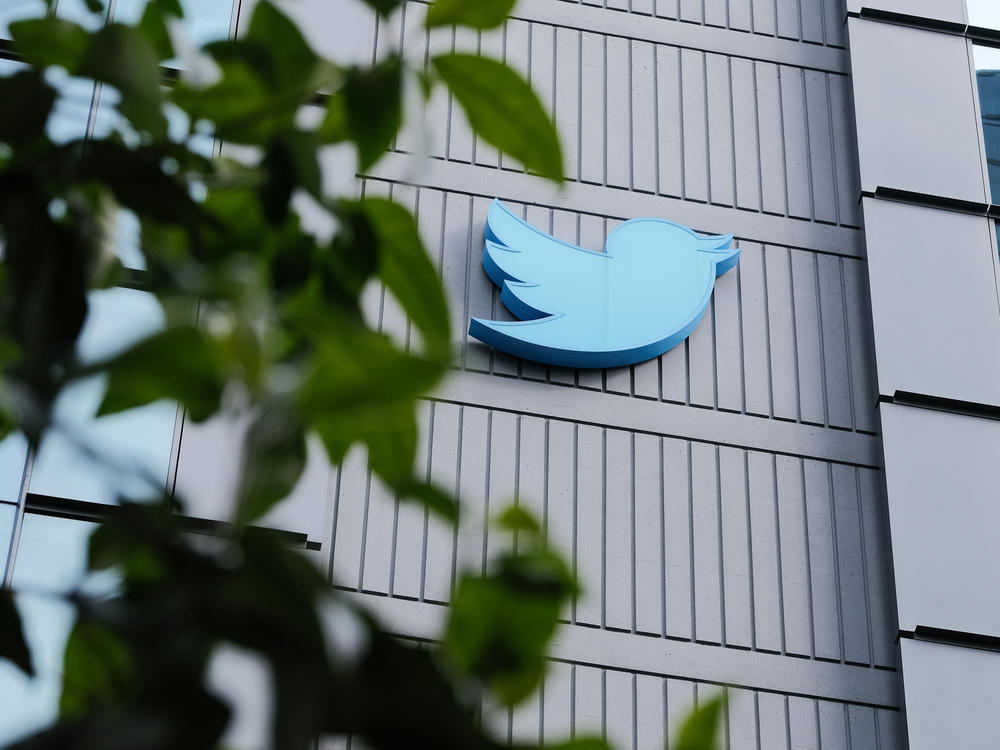Section Branding
Header Content
Misinformation threatens Twitter's function as a public safety tool
Primary Content
When Michele Rogosky heard about the shooting at The University of Virginia on Sunday night, she called her son right away, panicking. He's a student there, and she knew he liked to go to the gym late in the evening.
It turns out, he was sheltering in his apartment with his roommates, and knowing that helped her calm down. But the situation was precarious, with the suspect at large at the time, and little information available.
Rogosky lives 400 miles from Charlottesville, in Long Island, New York. Normally, she says she would have gone on Twitter to check the university's public safety accounts and look for updates. But something stopped her this time.
Between all the new ads and the lack of verification on accounts, she found it hard to know who and what information she could trust.
"It's interesting because I was glued to Twitter last Tuesday," Rogosky says, referring to election night. "It's a cesspool now."
Then, a Ukrainian missile crossed into Poland and killed two Polish citizens. Nerves were high as NATO convened an emergency meeting about what this might mean for the ongoing conflict with Russia. Like the day before, Twitter users expressed hesitation about the information they were seeing on the platform.
At the core of the confusion was Twitter's new – and frequently changing – policies that have been implemented since Elon Musk's tenure as owner and CEO began in late October. A blue check mark next to a user's name used to mean their identity had been verified by the social media company. At the time, verification was a built-in service that allowed the public to quickly determine which accounts and information were coming from a legitimate source.
Then, Musk introduced the now-paused Twitter Blue in early November: a subscription plan available for $7.99 per month, allowing anyone to obtain that once coveted blue checkmark next to any screenname they wished.
Soon after, Twitter was flooded with impersonators and misinformation, with fake George W. Bush and Tony Blair accounts trading jokes about the Iraq war, and "verified" accounts for public figures and institutions like Rudy Giuliani, Brigham Young University, even Jesus Christ.
But the most popular target appeared to be Musk himself — in order to show Twitter's new owner just how easy it was to imitate public figures under his new policies.
When the UVA shooting broke late Sunday night, people looking for more information complained that the top tweet was someone pretending to be Texas Senator Ted Cruz commenting on gun violence.
The company suspended Twitter Blue less than 48 hours after its introduction, and Musk has said the service will be relaunched later this month.
Musk also announced that the company was taking action to address fake accounts.
"Going forward, any Twitter handles engaging in impersonation without clearly specifying 'parody' will be permanently suspended," Musk tweeted. While Twitter previously issued warnings before suspending users, his statement warned that after rolling out widespread verification, "there will be no warning."
Despite this, the damage may have already been done.
"Many will be looking for other ways to connect with people and to get information," says Donyale Padgett, a professor of communication studies at Wayne State University in Detroit.
Padgett has done extensive studies on how Twitter has been used to reach the public during natural disasters, most recently focusing on Hurricane Harvey in 2017. This includes Houston mayor Sylvester Turner using Twitter to share evacuation orders, safety warnings and recovery information to vulnerable people in his city.
So why was Twitter specifically useful in that situation? Padgett says it's mainly about access.
"Especially in a crisis situation, it's a way to share information with the greatest number of people. The people whose lives are most affected by the situation might not have a lot of options. They need to get this information and they need to get it quickly."
That's also what makes those people vulnerable to misinformation, Padgett added, and illuminated why verification is so important. If people need to make a quick decision during a natural disaster, they don't have time to make sure the information they're getting is from a legitimate source or a parody account. That verification process was supposed to be Twitter's job. And until recently, it was.
"Now it's a free-for-all," says Padgett. "To think that could be compromised? It doesn't make me feel good. It definitely is a breach of confidence in the whole system."
Padgett lives in Detroit, where extreme weather is an issue throughout the year, especially during the winter. For years, tweets from local officials have been a quick, reliable way to reach the public and keep them safe. She worries that users with "malicious intentions" could start fake profiles to mislead people. And despite her extensive research and history of work on the platform, Padgett is thinking about leaving Twitter and deleting her account.
"My hope is that I won't have to," she says. "That they'll do something to restore the integrity. But I haven't made up my mind yet. I'll be watching."
Copyright 2022 NPR. To see more, visit https://www.npr.org.

